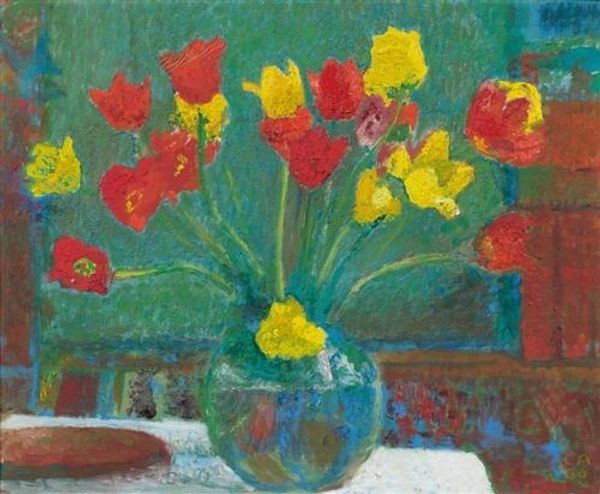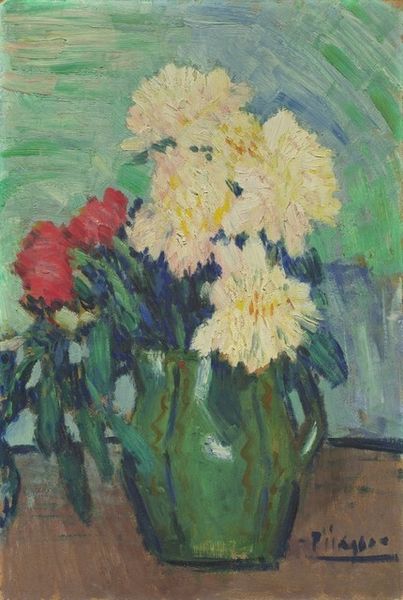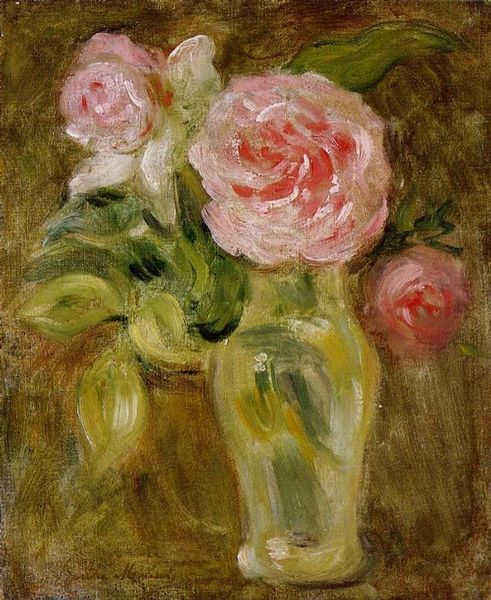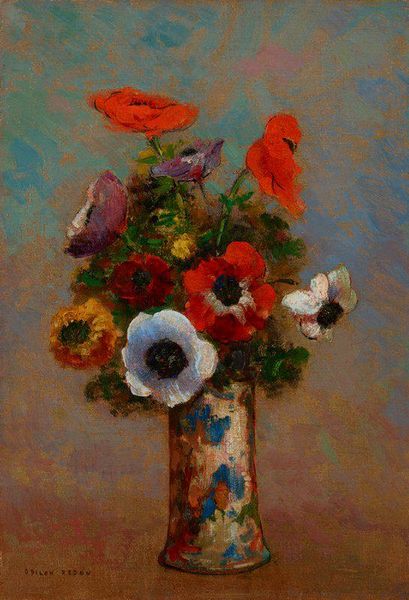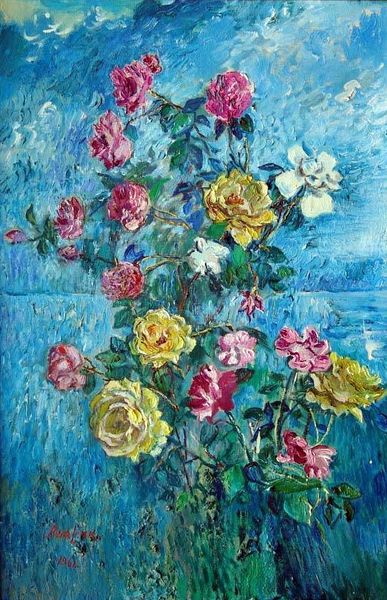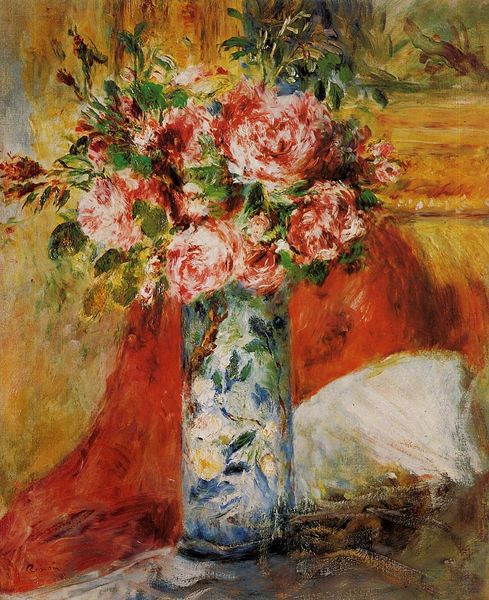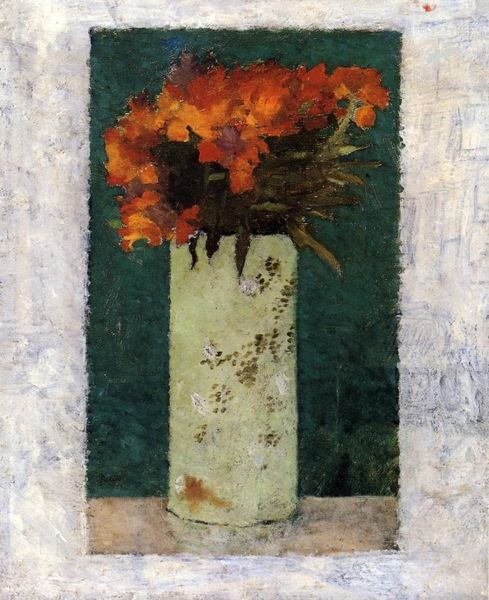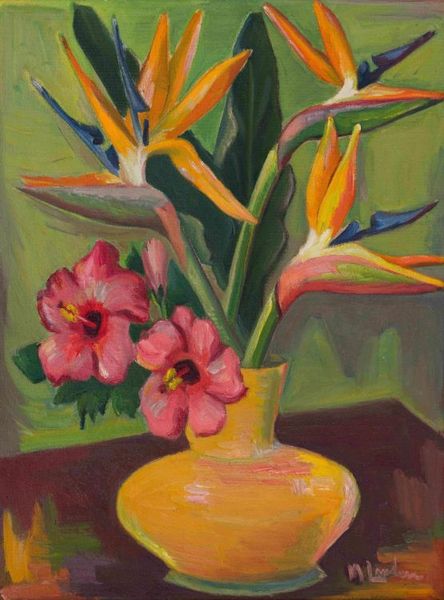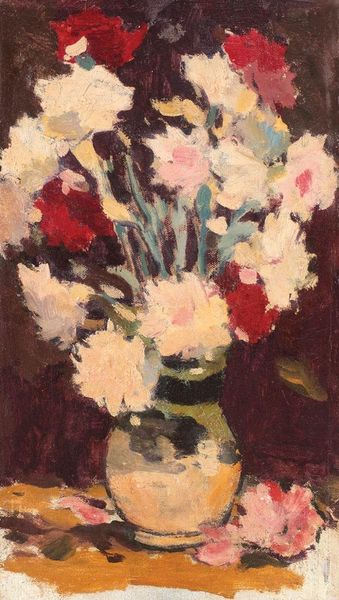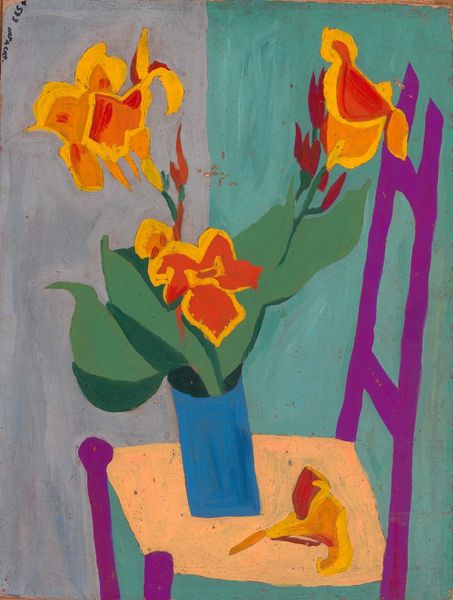
painting, acrylic-paint
#
painting
#
acrylic-paint
#
geometric
#
naive art
#
modernism
Copyright: Alexandru Ciucurencu,Fair Use
Editor: We're looking at Alexandru Ciucurencu's "Still Life with Flowers," painted in 1972, using acrylic. The composition is really striking, almost blocky. The bright orange backdrop contrasts dramatically with the softer floral forms. What is your take on how Ciucurencu handles form and color in this piece? Curator: The painting employs a fascinating juxtaposition of geometric abstraction and organic form. The grid-like background asserts a rigid structure, almost a Mondrian-esque influence, countered by the loosely rendered floral arrangement. The tension between these elements creates a visual dialogue. Notice the thick impasto and the vibrant color palette—orange, green, red—used not for mimetic representation, but for their inherent properties. Editor: So, the flowers aren’t necessarily trying to look real. It's more about the colours and shapes. Curator: Precisely. Ciucurencu deconstructs the traditional still life. The emphasis shifts from representational accuracy to the materiality of the paint itself and the interplay of shapes. Are you noticing the contrast in texture between the background and the foreground? Editor: Now that you mention it, yes. The background has a flattened quality compared to the almost sculptural paint application on the flowers. So, it's about how the elements interact, not just what they are. Curator: Indeed. This painting embodies Modernist ideals, privileging formal elements and pushing beyond mere surface appearance to achieve a greater aesthetic significance through shape and colour. Editor: This was truly eye-opening. I’ll definitely approach art with a more critical perspective of how colors and textures interplay moving forward. Curator: I concur, noticing that subtle but dynamic interplay is truly how to extract full potential out of a given artwork.
Comments
No comments
Be the first to comment and join the conversation on the ultimate creative platform.
